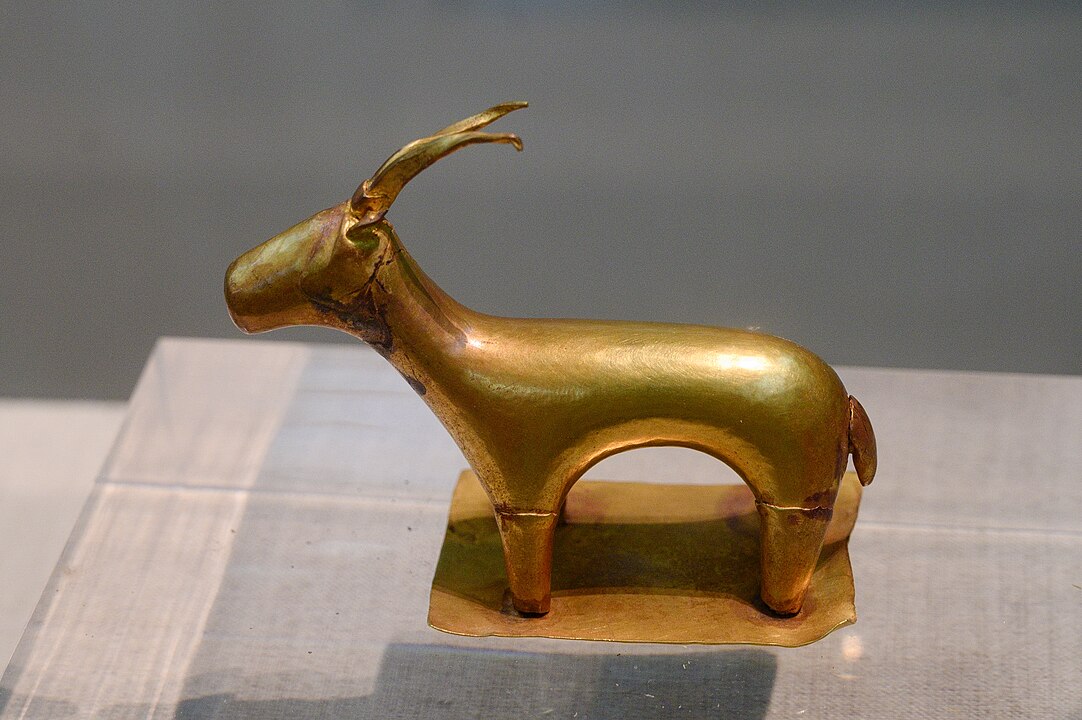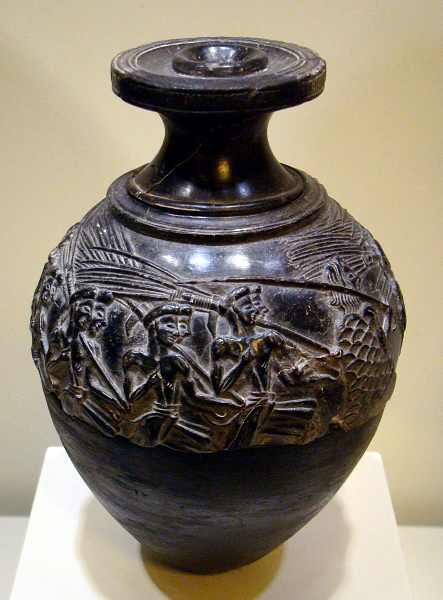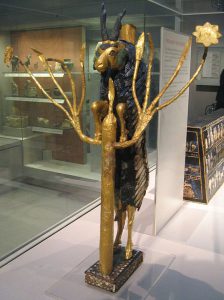In the first half of the second millennium B.C., the people of Crete enjoyed unprecedented prosperity. The basis of this was partly active trade with other Bronze Age civilisations. However, the core of Keftiu society was reaching for a higher state of existence and spiritual awareness. Their rich land produced a surplus of commodities like timber, olive oil, and excesses of various agricultural produce. Keftiu textiles, ceramics, jewellery, and other luxury goods were coveted across the Mediterranean basin. It’s fair to say the Keftiu excelled at everything they endeavoured to accomplish.
The Keftiu were also the great metallurgists of the age. Their exquisite filigree and granulated jewellery creations were unequalled. Carved seal stones with detailed scenes in miniature are, to this day, a mystery. How did they craft these magnificent items? What technology did the Keftiu possess, and what tools did they create to carve tiny intricacies in stone? However, their unusual attention to minute detail was not limited to stone or rare metals. The Keftiu created masterpieces in clay, ivory, painting, and even the colouring of textiles. Some experts believe the Keftiu created Tyrian Purple from crushed Murex (Muricidae) snail shells. Several sites on Crete and offshore of the main island were dye production facilities dating from the 20th–18th century B.C.

Stemming from their intimate ties with the natural world, where they believed humans and nature were active participants, the Keftiu possessed ideas and ideals few today have any conception of. Looking at their art, architecture, and cultural heirlooms, it’s easy to see that the inspiration behind their creations stemmed from their environment and experiential existence. The Sea surrounding their islands, rugged mountainscapes, and abundant flora and fauna affected Minoan artisans profoundly. Animals are perhaps the most common representations in Keftiu art. The Ibex, for instance, is one of the most prevalent creatures depicted but one not often focused on in academic writings.
A fine example of the Keftiu being so influenced by the divine as symbolised by the natural world is the Zakros Peak Sanctuary Ryhton. The remarkable ritual vessel was discovered broken into pieces in the palace’s/temple’s Hall of Ceremonies. It was initially wholly gilded, and its relief depicted imagery like birds, goats, an altar, and the now-famous Horns of Consecration. As we know, the horns illustrate the gateway from normal space into the sacred. Or, as in much Keftiu art, architecture, and imagery, the separation between the ordinary and the divine space. Interestingly, perhaps indicatively, the Zakros Ryhton is one of only nine artefacts ever found from the late Keftiu LM1B period (five) to the Mycenean periods (four).

The purpose of Rytons has been a matter of discussion since the first discoveries, but some experts believe the vessels were used to channel liquids for domestic purposes (Robert Koehl). However, the nature of the skill and meticulousness of the Zakros and the Harvester (at left) vessels suggest their use in special rituals (Wendy Logue). It seems logical to assume the vessels were part of some investiture or other ceremony (Karla Huebner). The suggestion is that liquids transiting through the rhyton would be somehow transformed or purified. This seems accurate given what we know of the Keftiu religion and the ritual customs of other early civilisations. An aspect that has not been explored so much, the “language of art” can fill in many of the blank puzzle pieces of Keftiu life. This is one reason objects like the Zakros Peak Sanctuary Ryhton, the Harvester Ryhton, the Chieftan Cup, and the Boxer Ryhton might also be objects of what a “political culture” in which such fine Keftiu art objects indemnified and even branded the elites (Carl Knappett).
By the same logic, these superb objects might as easily have empowered a religious elite of high priests and priestesses. Whether or not either case is true, it’s clear that objects like the Zakros Peak Sanctuary Ryhton elevated the status of their possessors. Studying these objects’ depictions, materials, styles, and symbolism (language) shows us what was essential to the Keftiu. And it’s indisputable their intimate relationship with the Earth, the sky, and what lies beyond is recorded in such artworks.

If we examine the depictions on the vessel, several things become apparent. First, the goats depicted on the vessel are not ordinary domesticated animals or even herded or hunted creatures. Proof of this is reasonably abundant, but a cylinder seal from Mari (3000–2000 B.C.E.) depicting heroes walking with fully developed male goats and an eagle with a lion head is prime for comparison. Given the proven connections between Mari and the Keftiu, the style and implication of the figures on the Zakros object are simplified (Karen Polinger Foster). For this writer, Keftiu art was as much about transcendence as a symbolic language. The essence of the objects and the rituals they were employed in literally took the participants to some higher plane. Those birds flying through Horns of Consecration, the depiction of virile wild goats, and the suggestion from other cultures of the goat’s magical properties, along with the relief of the shrine in the center of the object, tell me the liquid passed through Zakros Peak Sanctuary Ryhton transported a recipient or recipients into another realm.
This aspect of Keftu art deserves the special attention of Keftiu Magazine. Still, I will leave off pointing out that the constellation Capricorn (the ram) in the Western zodiac symbolises the gate of the gods.

